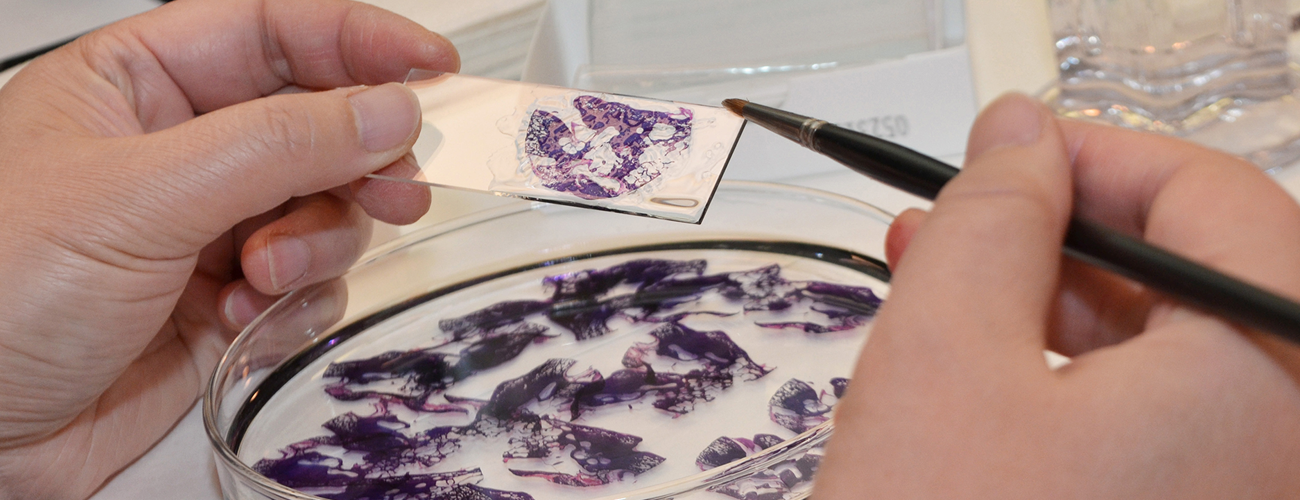National Temporal Bone Registry
Temporal Bone Research
Human temporal bones provide an invaluable resource for the study of the pathology and pathophysiology of disorders of hearing, balance, and facial nerve function. There are many reasons why it is critical to continue to study human temporal bones that have been acquired at autopsy.
The Registry urges otolaryngologists, audiologists, hearing aid dealers, and other healthcare providers to display the Registry's brochure throughout office spaces and institutions. The brochure encourages individuals with otologic disorders to bequeath their temporal bones to scientific research, it describes the functions of the Registry, and answers commonly asked questions about temporal bone donation.
Why Temporal Bone Research?
Paradoxically, very little is known about the underlying temporal bone histopathology in genetic deafness. To date, more than 400 syndromes with associated hearing loss have been identified. In addition, it has been estimated that at least 70% of hereditary hearing loss is non-syndromic and more than 100 genes have been identified as causal for non-syndromic hearing loss.
On a worldwide basis, there are only a few case reports of otopathology in patients with genetic deafness where the precise genetic mutation was known. Given the variant clinical expressions of syndromes of genetic deafness, it becomes urgent to provide pathologic profiles that can be matched to the genetic abnormalities. Without this knowledge, it will be difficult to ultimately devise strategies for overcoming the genetic defects. Animal models, including knockouts, knockins, and naturally occurring mutants are being increasingly used to investigate the genetics of hearing loss. Such models can provide valuable information regarding the molecular bases of auditory and vestibular disorders, but remains important to verify the validity of these models by comparison with the otopathology as determined in human cases.
Studying human specimens can generate hypotheses regarding pathways and mechanisms of hearing loss, which can then be tested experimentally in a suitable animal model. Thus, human and animal otopathology are complementary in terms of the information they can provide to researchers interested in genetics of hearing impairment. There are also many syndromes of hearing loss for which no animal models currently exist, and so the study of human specimens in such cases is critical.
In addition to traditional light and electron microscopy, techniques such as polymerase chain reaction (PCR) amplification of DNA and mRNA, in-situ hybridization, immunostaining, and emerging technologies for proteomics research can now be applied to temporal bone and brain specimens which holds great promise in improving knowledge of the molecular pathology of hearing and balance disorders.
There are too many other conditions for which there are no or few human temporal bone specimens.
Examples include: Bell’s palsy, sudden idiopathic deafness, vestibular neuritis, perilymphatic leak, among others. Unless we understand the pathologic bases for these disorders, it is difficult to implement rational diagnostic and therapeutic modalities. Also, there are still a number of common otologic disorders such as chronic otitis media and otosclerosis for which there are no counterparts in animals; therefore, many questions concerning pathology and pathophysiology cannot be answered in the experimental animal.
For example, there are very few well-documented specimens from patients who have undergone surgery for Meniere’s disease. Hundreds of operations are performed annually for Meniere’s disease and we do not know whether these procedures actually do what they are supposed to. More than 50,000 cochlear implants have been inserted, and yet, less than 200 temporal bones with implants are available nationwide. Elucidation of the histopathologic changes after otologic surgery can lead to a better understanding of the success of these procedures and also lead to improvements in techniques and technologies.
There are very few temporal bone specimens that have been procured from normal individuals with well-documented normal levels of hearing and balance function.
Normal specimens are essential to serve as controls, especially in studies utilizing molecular and cellular methods of investigation.
Contact Us

The Registry is supported by NIH Cooperative Agreement U24DC013983 from the National Institute on Deafness and Other Communication Disorders.
Tel: 800-822-1327 | TTY: 800-439-0183 | Fax: 617-573-3838
tbregistry@meei.harvard.edu


